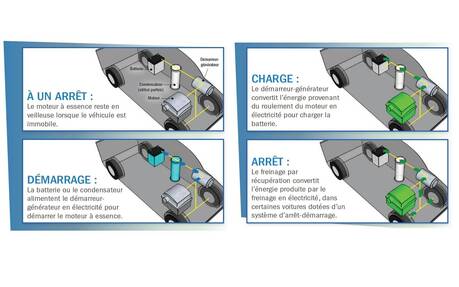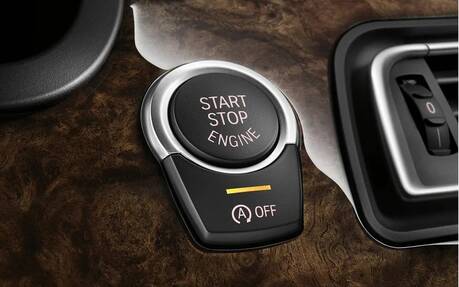How Useful Is the Start-Stop Technology?
Technologies are everywhere in modern vehicles, but they were not all created equal. Some are far more useful than others and can have a big impact on performance and handling.
The device we will focus on today is the idle start-stop, a system designed to reduce fuel consumption. With the current high gas prices, anything to save a few bucks is welcome, no?
What Is It Exactly?
The start-stop system not only reduces fuel consumption, it also reduces exhaust gas emissions by shutting off the engine when it’s idling or when it’s in low-speed deceleration (less than 8 km/h). The engine restarts automatically as soon as the driver releases the brake pedal.
Frequently used in hybrid vehicles, this system is now spreading to more traditional models. It combines smart electronic controls with a battery, alternator and starter that are built stronger for smooth operation, and to compensate for the additional starts and higher electricity demand.

The idle start-stop system can be manually deactivated by pressing a button often located on the dashboard or the console.
When it’s hot, the air conditioning will keep working when the engine is off if the vehicle’s A/C compressor uses an electric motor powered by a battery. In other vehicles, this compressor stops working when the engine does, but the fan will continue to blow air.
However, when it’s cold, the system is usually deactivated (below -7 °C for example). Because the battery’s performance is affected by low temperatures, the manufacturers chose to avoid eventual starting problems due to insufficient energy.

How Useful Is It?
The start-stop technology can decrease your city fuel consumption by 4-10% or more, according to Natural Resources Canada. But this all depends on the driving conditions and the way you drive, of course. In short, it will be useful for some, and insignificant for others.
NRC estimated the fuel savings allowed by this technology over a ten-year period, and the results are between $340 and $2,000. The calculations were based on 11,000 km per year in city driving conditions, with a fuel price of $1.30/L.
Remember this when looking for your next vehicle …
